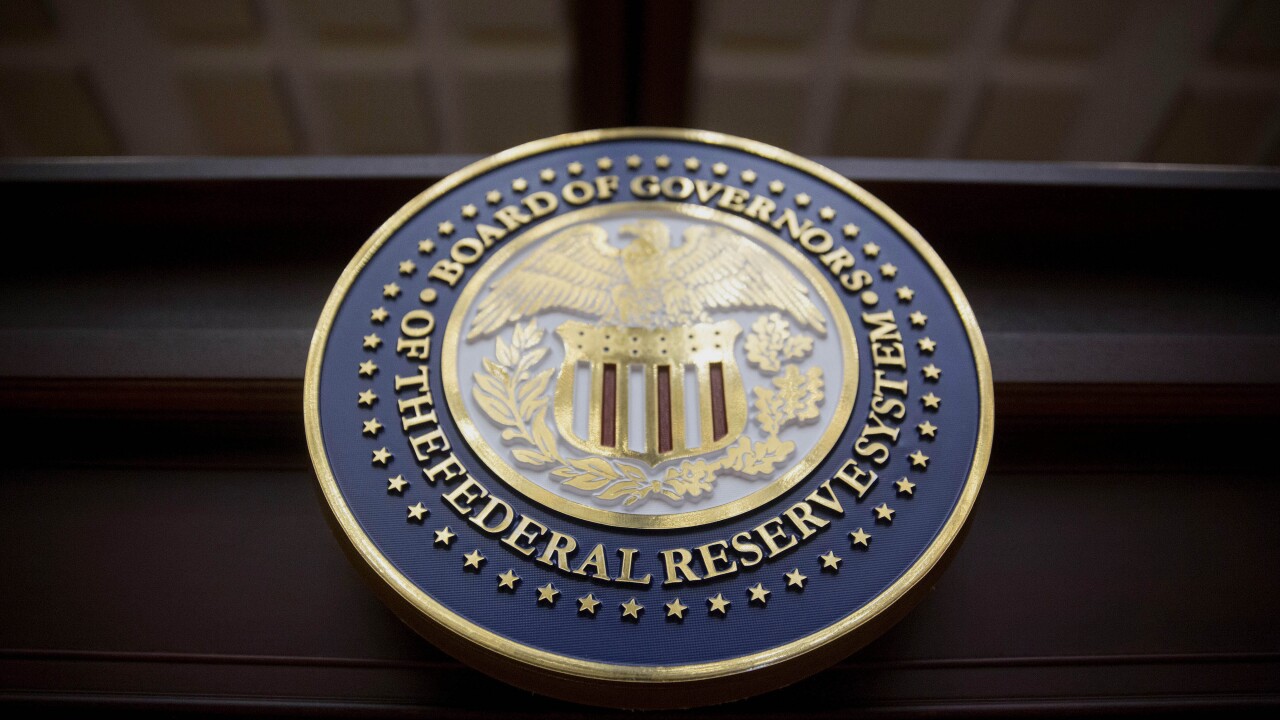- What's at Stake: President Donald Trump has been pressuring the central bank to lower interest rates for months.
- Forward Look: Miran, who is on leave from his position as chair of the White House Council of Economic Advisers while serving at the Fed, is Trump's first pick in his second term to join the Federal Reserve Board.
- Expert Quote: Miran said crypto "is a force to be reckoned with," but he declined to say whether current changes constitute a "new industrial revolution."
Federal Reserve Gov. Stephan Miran gave his first speech on stablecoins and cryptocurrencies, saying that the increased use of stablecoin in the economy will necessitate a lowering of interest rates.
Speaking at an event sponsored by Bloccelerate VC at the Harvard Club in New York City Friday afternoon, Miran — one of the chief architects of President Donald Trump's trade policies — said stablecoins may become "a multitrillion-dollar elephant in the room for central bankers."
Stablecoins are an innovation that have been "unfairly treated as a pariah by some," Miran said, but with the passage of the
Still, Miran noted that there is some risk that a flow of deposits out of the banking system and into stablecoins could "disintermediate banks, affecting the transmission of monetary policy and stunting the velocity of money."
He heaped praise on the GENIUS Act, which passed in July in a bipartisan effort to regulate the stablecoin industry and create a framework for digital assets. The law requires stablecoin issuers based in the U.S. to maintain one-to-one reserves in safe, liquid, U.S. dollar-denominated assets.
President Trump has
Because of the GENIUS Act, stablecoins "do not offer yield and are not backed by Federal Deposit Insurance," Miran said, adding: "I see little prospect of funds broadly seeing the domestic banking system. The real opportunity in stablecoins is to satiate untapped foreign appetite for dollar assets from savers and jurisdictions where dollar access is limited."
Stablecoin will further enforce the dominance of the dollar, he said, while also furthering U.S. growth.
"Depending on the source of funds used to invest in stable coins, it may constitute new, loanable funds in the U.S. economy, or the overall amount of money available for borrowing and lending," he said. "Even stablecoins outside the ambit of the Genius Act are likely to boost demand for Treasuries and other dollar-denominated assets."
Miran, who has
"The more stablecoins actually grow and the more stablecoins pull savings into the U.S. economy from places they might not otherwise be — either because they were physical cash stuffed into the mattress, or because there's money flowing in from other forms of deposits that are not in the U.S. financial system — the more that happens, the lower interest rates will have to go in the United States as a result," he said.
Nicole Valentine, the fintech director at the Milken Institute, asked Miran during a fireside chat what the Fed can do with the economy "in this moment where we have disruptive and redefining innovation."
"The best thing that the Fed can do is stick to its mandates of price stability and maximum employment," Miran responded. "And if we do a good job with that, then the business cycle will not get in the way."
Miran said crypto "is a force to be reckoned with," and that the economic consequences of the adoption of more stablecoins is a matter for the Fed and for monetary policy.
"I will be paying more attention to things in the future," Miran said. "There's a number of unanswered questions that we have to start paying attention to, and we also have to start paying attention to how these things work themselves into the payment system."
However, when Valentine asked if trends such as web theory and AI were part of a "new industrial revolution," Miran demurred, saying the question "is a little above my head."
But he quickly noted that many companies are adopting AI, which could ultimately spur productivity, though that is not yet evident in the data.
"What technology allows you to do is more with less. And that's what we think of as productivity growth," he said. "What we've seen in the data in the recent past is an improvement in total factor productivity growth, but it's not an improvement to levels that would be historically anomalous and high yet it's an improvement. What I would like to see in the future would be even, even more TFP growth. And I implore the folks in this room to keep on innovating."







